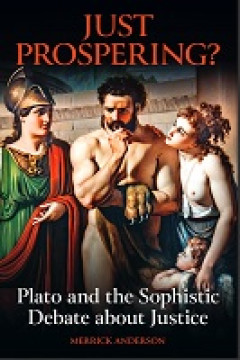Ditapis dengan
E-book The Blue Compendium : From Knowledge to Action for a Sustainable Ocean…
Global food demand is rising, and serious questions remain about whether supply can increase sustainably (FAO 2018). Land-based expansion is possible but may exacerbate cli-mate change and biodiversity loss, and compromise the delivery of other ecosystem services (Olsen 2011; Foley et al. 2005, 2011; Mbow et al. 2019; Amundson et al. 2015). As food from the sea represents…
- Edisi
- -
- ISBN/ISSN
- 9783031162770
- Deskripsi Fisik
- 914 hlm
- Judul Seri
- -
- No. Panggil
- 577.6 LUB t
E-book Negotiating Nursing
The Second World War was a new type of war; it was a global, mobile and unpredictable war. It was ‘among the most destructive conflicts in human history’, in which over forty-six million people perished, often in the most frightening and inhuman conditions.1 The latter years of the inter-war period witnessed a modernisation of the mili-tary technologies that had been use…
- Edisi
- -
- ISBN/ISSN
- 9781526147257
- Deskripsi Fisik
- 249 hlm
- Judul Seri
- -
- No. Panggil
- 940.53 BRO n

E-book Just Prospering? Plato and the Sophistic Debate about Justice
This book argues that Plato’s Republic must be understood as developing out of a 5th Century sophistic debate. In Part One the author presents a new analysis of the sophists and their extant texts addressing the important topics of justice and its value. This part shows that already in the 5th Century there was a robust debate about whether the just or unjust life was better for the self-inte…
- Edisi
- -
- ISBN/ISSN
- 9780197267660
- Deskripsi Fisik
- 238 halaman
- Judul Seri
- -
- No. Panggil
- 183 AND j
E-book The Chamber Musician in the Twenty-First Century
In recent research, there has been growing emphasis on the collaborative, social, and collective nature of musical behaviour and practices. Among the emerging hypotheses in this connection are the idea that listening to music is always listening together and being with the other; that music making is a matter of intercorporeality, mutuality, and emphatic attunement; and that creative agency in …
- Edisi
- -
- ISBN/ISSN
- 9783038975632
- Deskripsi Fisik
- 334 hlm
- Judul Seri
- -
- No. Panggil
- 785 CAM t
Ebook From Wilderness to Paradise: A Sixth-Century Mosaic Pavement at Qasr el…
An in-depth study of the large mosaic pavement in the East Church at Qasr el-Lebia in Cyrenaica, Libya. Consisting of fifty panels, each panel with a different image, it has frequently been dismissed as random with no overarching scheme. This book argues that the remarkably rich and complex mosaic should be understood as a coherent whole.
- Edisi
- -
- ISBN/ISSN
- 9781803277318
- Deskripsi Fisik
- 168 halaman, ilus.
- Judul Seri
- -
- No. Panggil
- 930.1 CHI f
E-book The Graphic Design : Idea Book
Albers advanced the idea that colour is continually deceptive, and that the exact same colour can evoke innumerable responses depending on how it is seen against other colours. He argued against ‘mechanically applying or merely implying laws and rules of colour harmony’, because of the subjective nature of perception – it is almost impossible to see a colour by itself and not interacting …
- Edisi
- -
- ISBN/ISSN
- 9781780677569
- Deskripsi Fisik
- 129 hlm
- Judul Seri
- -
- No. Panggil
- 741.6 HEL t
E-book Connecting Continents : Archaeology and History in the Indian Ocean World
equently missing from this burgeoning discourse, however, are contributions by archaeologists, and historical archaeologists in par-ticular,6 as well as conscious attempts to study this region’s past from an interdisciplinary perspective. A recent special edition of the journal Slavery and Abolition demonstrates that some historians are increas-ingly aware …
- Edisi
- -
- ISBN/ISSN
- 9780821446409
- Deskripsi Fisik
- 429 hlm
- Judul Seri
- -
- No. Panggil
- 930.1 SEE c
E-book Eyewitness Travel: Budapest
- Edisi
- -
- ISBN/ISSN
- 9780241263198
- Deskripsi Fisik
- 278 halaman, ilus.
- Judul Seri
- -
- No. Panggil
- 910 OLI e
- Edisi
- -
- ISBN/ISSN
- 9780241263198
- Deskripsi Fisik
- 278 halaman, ilus.
- Judul Seri
- -
- No. Panggil
- 910 OLI e
E-book Eyewitness Travel: London
- Edisi
- -
- ISBN/ISSN
- 9780241277300
- Deskripsi Fisik
- 442 halaman, ilus.
- Judul Seri
- -
- No. Panggil
- 910 SHA e
- Edisi
- -
- ISBN/ISSN
- 9780241277300
- Deskripsi Fisik
- 442 halaman, ilus.
- Judul Seri
- -
- No. Panggil
- 910 SHA e
E-book Eyewitness: Seashore
Two thirds of our planet is covered with water. Every fragment of land, from the great contingent of Eurasia to the tiniest pasific island, has a shore. The total length of shorelines is huge. Yet the width is hardly measurable in comparison - it is often just a few yards. Shores are strange places, being the edge of the land as well as the edge of the sea. The sea level rises falls with the ti…
- Edisi
- -
- ISBN/ISSN
- 9780756607203
- Deskripsi Fisik
- 74 halaman, ilus.
- Judul Seri
- -
- No. Panggil
- 593 PAR e
 Karya Umum
Karya Umum  Filsafat
Filsafat  Agama
Agama  Ilmu-ilmu Sosial
Ilmu-ilmu Sosial  Bahasa
Bahasa  Ilmu-ilmu Murni
Ilmu-ilmu Murni  Ilmu-ilmu Terapan
Ilmu-ilmu Terapan  Kesenian, Hiburan, dan Olahraga
Kesenian, Hiburan, dan Olahraga  Kesusastraan
Kesusastraan  Geografi dan Sejarah
Geografi dan Sejarah